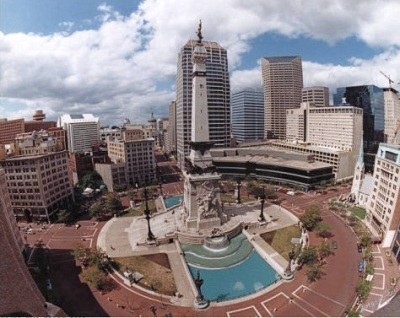
Plan your visit
Storytelling Back-to-the-Future Style
October 21, 2015

As many of you likely heard, we recently experienced Back to the Future Day, the day on which Marty McFly and Doc Brown arrived in the future (Oct. 21, 2015) in the 1989 film. Like many others who grew up in the ’80s and ’90s, I was oddly excited by the fact that the entire trilogy of Back to the Future now takes place in the past. The Back to the Future movies are a distinct feature of the culture of my childhood, and their depiction of the “future” in 2015 was a form of visual storytelling that I was always glad to grab hold of. Who wouldn’t want a hoverboard?
Movies are a perfect example of successful visual storytelling. So often what is seen by the viewer is more poignant than what is heard or read. In this age of visual storytelling, museums certainly have a leg up. Our collections serve as the in-house, extant illustrations of the stories we hope to tell about our communities. Our collections are full of items just waiting to tell the stories of the heroes, first families, legendary tales and unique places that make each museum unique.
Sometimes it can be difficult to get others as excited about our stories as we are. One way to help spark interest is connecting the story you are telling with a story they already know. Back to the Future always landed back in the “present” (the year the movies were filmed) in order to connect the new stories and visual elements to things the audience found familiar. Perhaps in your story you talk about the fact that Wonder Woman may not have lived in your town, but there was a teacher who saved several student’s lives when she covered them with her own body during a tornado that ravaged the one-room schoolhouse at that moment, she was Wonder Woman.
Another helpful tool is to engage them in continuing the story. Ask visitors, whether in person or through social media, who they would name a “wonder woman” in your area. Or, ask them what they have done that made them a hero, from opening the door for someone needing a hand to helping locate a lost pet.
Meeting the audience where they are, and then engaging them in further discussion, can help solidify the story for them. Imagine walking into a museum and seeing a piece of broken board with a label stating “board from Holbrooke school destroyed in 1885 tornado.” Now imagine walking into that same museum and reading a label that compares a courageous 1885 schoolteacher to Wonder Woman and asks you to consider a wonderful woman in your own life. Which story would stick with you longer?
Better yet, if you, like me, were a little too excited about Back to the Future Day, perhaps you could look at items from your collection that date to the periods visited in the film: 1885, 1955, 1985 and 2015. You would certainly get me in the door to see a visual storytelling of that!








